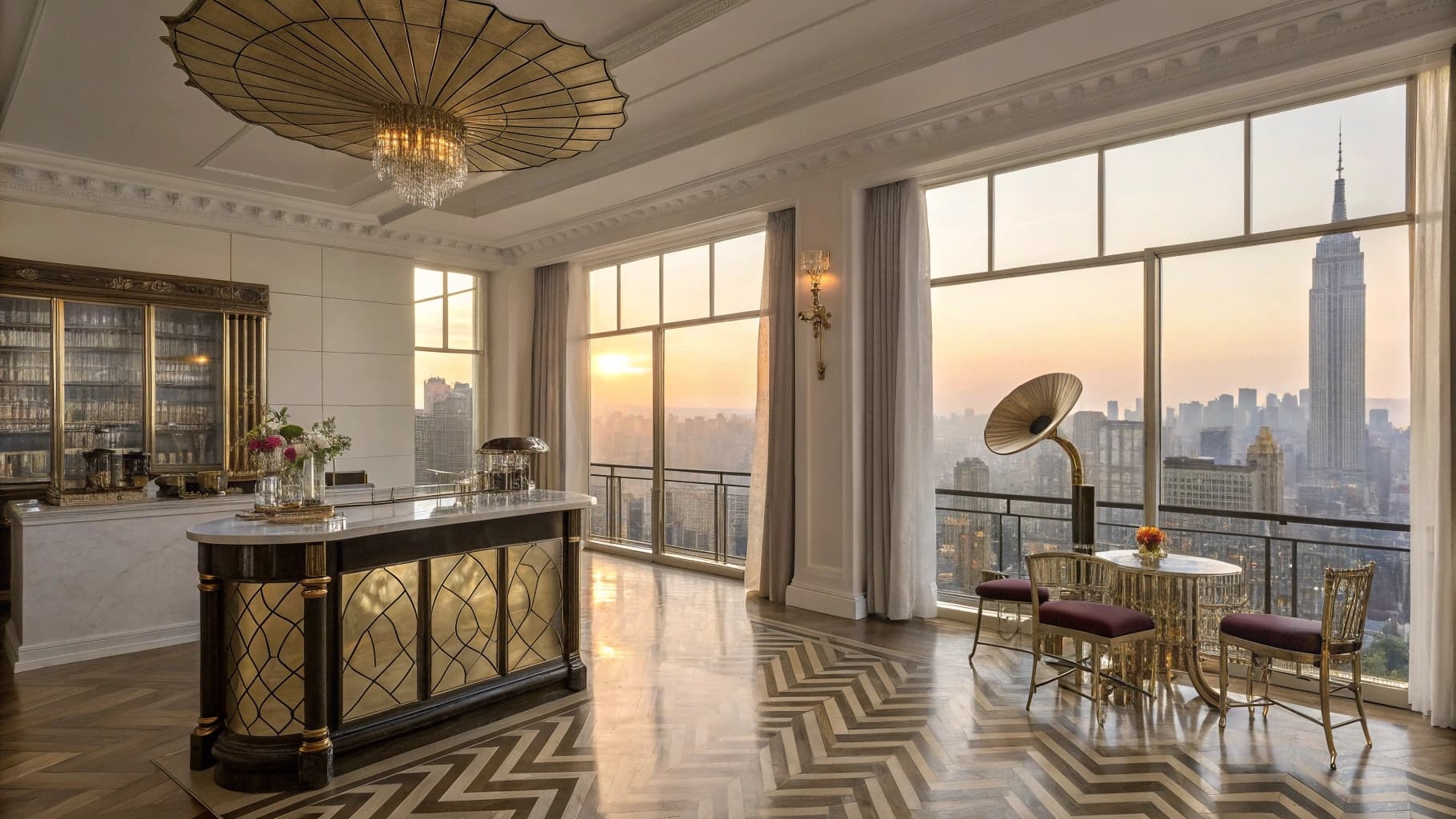The concept of the penthouse apartment has a rich history that dates back to the early 20th century. Initially, the term “penthouse” referred to a small structure built on the roof of a building, often used for utility purposes or as a simple living space. These early iterations were not the luxurious abodes we associate with the term today.
Instead, they were practical spaces that provided additional room in densely populated urban areas. As cities began to grow and evolve, so too did the idea of what a penthouse could be. As I delve deeper into the origins of penthouses, I find it fascinating how they transitioned from utilitarian spaces to symbols of luxury and exclusivity.
The post-World War II era marked a significant turning point in this evolution. With an economic boom and a surge in urbanization, developers began to recognize the potential of rooftop living. They started to design penthouses that offered breathtaking views and spacious layouts, catering to the affluent class seeking a unique living experience.
This shift laid the groundwork for the modern penthouse, which would soon become synonymous with opulence and prestige.
The Rise of the Penthouse as a Status Symbol
The Elite’s Abode
Celebrities, business moguls, and high-profile individuals often seek out these luxurious spaces, further solidifying their status in the public eye. The media plays a significant role in perpetuating this image of penthouses as symbols of affluence, showcasing celebrity penthouses with lavish interiors and extravagant features.
An Aspirational Lifestyle
These portrayals create an aspirational narrative that many strive to achieve. The idea that living in a penthouse equates to success is deeply ingrained in our culture, making it a coveted lifestyle choice for those who can afford it.
A Reflection of Identity and Achievements
As I observe this phenomenon, I realize that the penthouse has become more than just a home; it is a reflection of one’s identity and achievements.
The Evolution of Penthouse Design and Architecture
The design and architecture of penthouses have undergone remarkable transformations over the years. In the early days, penthouses were often simple and functional, lacking the flair that characterizes modern designs. However, as architects began to experiment with innovative concepts, penthouses evolved into stunning works of art.
I find it intriguing how contemporary architects have embraced open floor plans, floor-to-ceiling windows, and outdoor terraces to create seamless connections between indoor and outdoor spaces. As I explore various penthouse designs, I am struck by the diversity in styles and aesthetics. Some penthouses boast minimalist designs with sleek lines and neutral palettes, while others embrace opulence with ornate details and luxurious materials.
This evolution reflects not only changing tastes but also advancements in technology and construction methods. Today’s penthouses often incorporate smart home features, energy-efficient systems, and sustainable materials, showcasing a commitment to modern living while maintaining an air of sophistication.
Famous Penthouse Apartments Throughout History
Throughout history, several penthouse apartments have gained notoriety for their unique features and illustrious residents. One such example is the iconic Dakota building in New York City, which has housed numerous celebrities over the years, including John Lennon and Yoko Ono. The penthouse at the Dakota is renowned for its historical significance and architectural beauty, making it a prime example of luxury living in an urban setting.
Another famous penthouse that captures my imagination is the one located atop the Burj Khalifa in Dubai. As the tallest building in the world, it offers unparalleled views of the city and beyond. The penthouse itself is a marvel of modern design, featuring expansive living spaces and state-of-the-art amenities.
It serves as a testament to how penthouses can push architectural boundaries while providing an extraordinary living experience. These examples illustrate how certain penthouses have become cultural landmarks, representing not just luxury but also the aspirations of those who inhabit them.
The Popularity of Penthouse Living in Modern Times
In recent years, I have noticed a significant surge in the popularity of penthouse living among urban dwellers. As cities continue to grow and evolve, more people are seeking out these exclusive residences for their unique blend of luxury and convenience. The appeal of living at the top is undeniable; it offers not only stunning views but also a sense of privacy that is often hard to find in bustling urban environments.
Moreover, the rise of remote work has changed how people view their living spaces. With more individuals prioritizing comfort and lifestyle over traditional commuting patterns, penthouses have become increasingly desirable. I find it fascinating how this shift has led to a greater demand for spacious layouts and outdoor areas within these apartments.
Many modern penthouses now feature expansive terraces or rooftop gardens, allowing residents to enjoy outdoor living while still being immersed in city life.
The Luxury Amenities and Features of Penthouse Apartments
Luxury Amenities
The amenities that come with penthouses are truly remarkable. Infinity pools, private elevators, and home theaters are just a few examples of the luxurious features that make penthouse living so unique.
Bespoke Services
In addition to these luxurious amenities, many penthouses also offer bespoke services tailored to residents’ needs. Concierge services, personal chefs, and housekeeping staff are just a few examples of how luxury is woven into the fabric of penthouse living.
The Ultimate Living Experience
What’s truly remarkable about penthouses is how these luxurious features and services come together to create an environment that’s truly indulgent. Residents can live their lives to the fullest, free from the burdens of everyday chores, and truly indulge in their lifestyles.
The Global Appeal of Penthouse Living
The appeal of penthouse living extends far beyond any single city or country; it has become a global phenomenon. As I look at various metropolitan areas around the world—from New York City to London, Hong Kong to Sydney—I see a common thread: the desire for elevated living experiences that offer both luxury and convenience. Each city brings its unique flair to penthouse design, reflecting local culture while catering to an international clientele.
What strikes me most about this global appeal is how penthouses serve as a bridge between cultures. They attract individuals from diverse backgrounds who share a common appreciation for luxury and exclusivity. This melting pot of residents fosters a sense of community among those who inhabit these elevated spaces, creating opportunities for networking and collaboration across industries and borders.
The Future of Penthouse Apartments in Urban Development
As I contemplate the future of penthouse apartments within urban development, I am optimistic about their continued evolution. With cities becoming increasingly vertical due to population growth and limited space, penthouses will likely play an essential role in shaping urban landscapes. Developers are already beginning to incorporate innovative designs that prioritize sustainability while maximizing space efficiency.
Moreover, as technology continues to advance, I envision future penthouses equipped with smart home features that enhance convenience and security. From automated lighting systems to advanced climate control, these innovations will redefine what it means to live luxuriously in an urban environment. As I look ahead, I am excited about how penthouses will adapt to meet the changing needs and desires of residents while remaining symbols of status and sophistication.
In conclusion, my exploration of penthouse apartments reveals their fascinating journey from humble origins to symbols of luxury and exclusivity. As they continue to evolve in design and appeal, I am reminded that these elevated spaces represent not just homes but also aspirations—an embodiment of our desire for beauty, comfort, and connection in an ever-changing world.
FAQs
What is a penthouse apartment?
A penthouse apartment is a luxurious living space that is typically located on the top floor of a high-rise building. It often features high ceilings, large windows, and a private terrace or balcony.
When did penthouse apartments become popular?
Penthouse apartments became popular in the 1920s, during the height of the Art Deco movement. They were seen as symbols of luxury and exclusivity, and were often associated with the wealthy elite.
What are some famous penthouse apartments?
Some famous penthouse apartments include the Woolworth Building Penthouses in New York City, the One Hyde Park penthouses in London, and the Odeon Tower Sky Penthouse in Monaco.
How have penthouse apartments evolved over time?
Penthouse apartments have evolved from being simple rooftop structures to luxurious, multi-level living spaces with state-of-the-art amenities and breathtaking views. They have become synonymous with luxury living and are often sought after by the rich and famous.
What are some key features of a penthouse apartment?
Key features of a penthouse apartment may include panoramic views, high-end finishes and appliances, private elevators, rooftop terraces, and exclusive access to amenities such as swimming pools, gyms, and concierge services.

